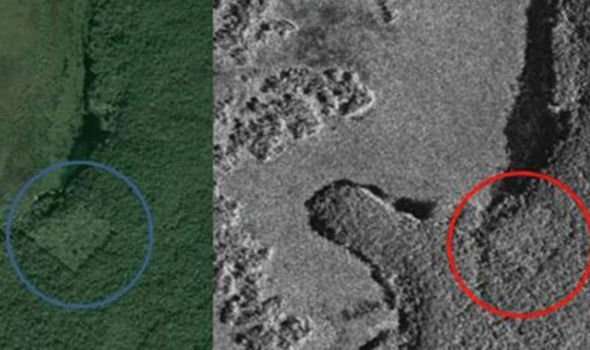GOOGLE MAPS was at the centre of an unexpected discovery when a teenager found what he claimed to be a lost Mayan city in 2016, without even stepping foot in Mexico.
Combining his love for the night sky and a childhood fascination of the Mayan “doomsday” calendar, 15-year-old William Gadoury, of Quebec, used satellite imagery and star charts to uncover what was speculated to be one of the largest Mayan settlements to ever exist. The youngster theorised that the locations of Mayan cities might correspond to stars in Mayan constellation and after analysing 22 Mayan star maps and overlaying them on Google Maps images of the Yucatan Peninsula, he was able to show that the 117 Mayan cities did match the positions, with the brightest stars representing major hubs. But William then uncovered a 23rd constellation, with three stars which correlated to two ancient cities, leading him to believe the location corresponding to the third star – on the Mexico-Belize border – could be a lost Mayan city, dubbing his find K’aak Chi, which means Fire Mouth.
Trending
A year earlier, in 2015, the amateur archaeologist had developed a relationship with the Canadian Space Agency (CSA) after winning a science competition and so they provided him with images from their RADARSAT-2 satellite of the proposed location.
Armed with his images, he collaborated with Remote Sensing expert Dr Armand Larocque, from the University of New Brunswick, who concluded that the 15-year-old had found a major city with 30 buildings and a large pyramid.
His findings were met with widespread praise, with scientists from the CSA describing his work as ‘exceptional,’ and they also presented him with a medal of merit.
Speaking in 2016, William told Journal de Montreal: “I did not understand why the Maya built their cities away from rivers, on marginal lands and in the mountains.


“They had to have another reason, and as they worshipped the stars, the idea came to me to verify my hypothesis.
“I was really surprised and excited when I realised that the most brilliant stars of the constellations matched the largest Maya cities.”
But, in the years since, William has received heavy criticism from acclaimed experts.
Archaeologist Richard Hansen noted that the location is also very close to the Maya ruins of Uxul, which have been the subject of archaeological investigation since 2009 and Mexican archaeologist Rafael Cobos Palma pointed out that the area of the supposed discovery has been extensively explored by archaeologists since the Thirties.

Famous Mayanist, David Stuart, cast doubt upon the discovery, describing it as an example of “junk science”, and identified the object on satellite imagery as an old cornfield.
Archaeologist Geoffrey Braswell, of the University of California, stated that the object is definitely not a Maya pyramid, and identified the imagery as either an abandoned crop field or an active marijuana field.
But, despite the criticism, William was still hopeful of his find and is looking to raise £100,000 for a two-week expedition to the proposed location.
Speaking to National Geographic in 2016, he said: “I know it’s not very good when I’m not accepted by critics, but it just helps me advance my research.
DONT MISS
End of the world: How archaeologist discovered ‘real Maayan doomsday’ [VIDEO]
Mayan DISCOVERY: How find in ancient city ‘reveals creation story’ [CLAIM]
Egypt: How ‘greatest archaeological find of all time’ stunned expert [REVEALED]


“I want to publish my research in a scientific journal so I can share it with archaeologists and scientists, right now I’m talking to one [journal] about writing for them.
“I have to go to Mexico and locate this city on the ground to prove it is there.
“I think scientists are jealous. Sometimes they are scared of new ideas. They’re afraid to have their established ideas criticised.”
Sourse: www.express.co.uk





